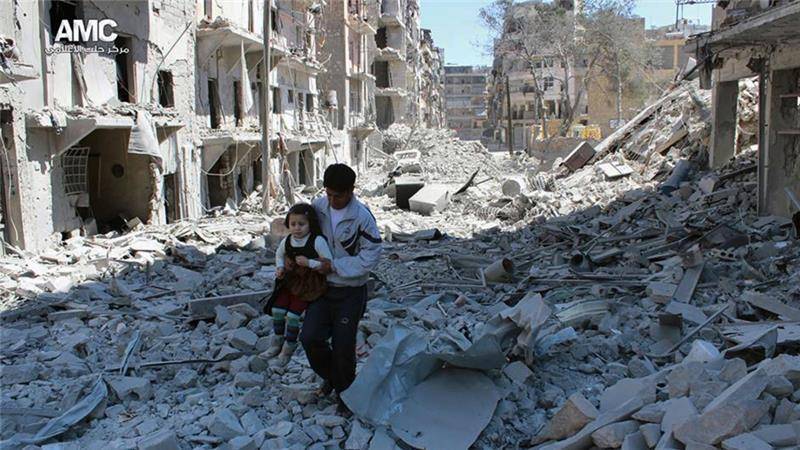A story of immense bravery, perseverance and determination can be read from the tarnished faces of refugees that are forced to migrate from Syria. They believe that in some extraordinary manner they can rebuild their shattered lives and the international donor community would assist them. The problem emanates from the inability of international donor community to actualise their plans. In the short term, the plan to provide financial assistance to the refugees is viable, but, in the long-term, there is a dire need to break the vicious circle that relies on an emergency allocation of resources as the only strategy.
A partial solution for tackling the problem was based on patrolling the Aegan Sea that prevented refugees from crossing Turkey and later assisted their retention. The problem with this approach is that it only targets the refugees based in turkey but does not cater to the refugees in Lebanon and Jordan as their respective governments are already facing problems related to financial expenditures, population size and gross domestic product. As a result of this one-sided approach the chronic aid reliance has increased amongst the refugees. The limitations of this approach are slowly being recognised by the chief donor community; particularly European Union who realises that the host countries must diversify the opportunities provided to the refugees in order to decrease the flow of migrants in Europe. This is easier said than done. While this approach is uncomplicated to implement in Turkey where the government is supportive, it is much harder in Lebanon and Jordan where the perception of refugees is increasingly marked by cynicism. In essence, a holistic approach is required.
Firstly, the host countries must understand that they will continue to provide support to the refugees as the normalisation process of Syria’s dilapidated situation would be time consuming. Secondly, an increased budgetary allocation for refugees is required but this assistance cannot be provided with an isolationist approach. This essentially means that donors cannot rely on the few customary channels for delivering aid and an alternative approach must be formulated. So this leads to the third strategy of designing a long-term response through tailor made packages that caters to not only the needs of refugees, but also evaluates the relative opportunities and limitations of the host country. This approach will be based on ‘what works best’ for the respective host country by assessing the economy, policy framework, institutional and market structure of the host country. This approach would be based on provision of assistance to refugees through funds that allow the participation of refugees in the labor markets. Another strategy that donor organisations can utilise is effectively building a relationship with not only the governments of the host country but also the local authorities and civil society organisations operating there. The local authorities as well as civil society organisations are aware of the grass root needs of the affectees and can cater to them in a systematic manner.
The host country government, in collaboration with the civil society organisations, can apply a three pronged strategy to tackle the migrant crisis. The approach can be divided into three parts: Pre-crisis, Emergency phase and Post-crisis phase. In the pre-crisis phase, preparedness structures must be analysed and strengthened, including data tracking, crisis alert, awareness raising and information systems. Additionally, training packages for deployment teams must be designed and a call center with an effective beneficiary feedback mechanism must be launched. Secondly, in the emergency phase, enhanced focus should be on the response mechanism based on provision of tailor made packages with additional non-discriminatory and protection measures in place. Lastly, in the Post-crisis phase, recovery measures must be assessed and the challenges for the host countries and the migrants must be evaluated after receiving assistance. It would involve learning from past mistakes and focusing on strengthening the implementation mechanism with enhanced diaspora engagement.
It’s time to break this vicious cycle and focus on sustainable approaches to tackle the migrant crisis. An integrated approach based on preparedness, response and recovery would provide the impetus for collectively restructuring the existing approaches that have not been completely efficacious.
As individual citizens belonging to any country, we must also play a pertinent role. This is not limited to empathising with the migrants but also help them through donations/other means. This corroborates the sayings of Mother Teresa: “We ourselves feel that what we are doing is just a drop in the ocean. But the ocean would be less because of that missing drop.”






